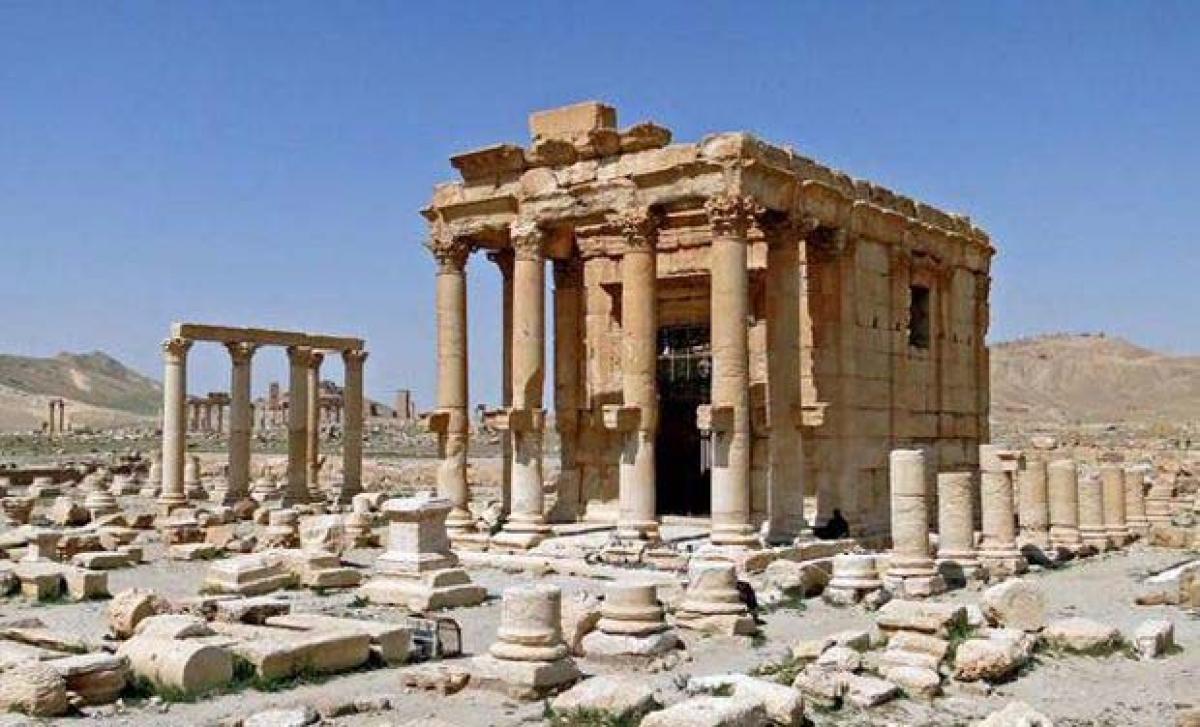Live
- Must-Watch OTT Originals in 2024: The Year’s Best Shows and Movies
- 40 Indian startups secure over $787 mn in a week
- India now formidable force on chess board
- Raghavendra Mutt pontiff visits Tirumala
- Whistleblower of OpenAI found dead in US apartment
- Trump’s US-first policy & India’s strategic latitude
- Chandrababu pays tribute to Potti Sriramulu and Sardar Vallabhbhai Patel
- India may miss TB elimination target
- Revolutionizing Women’s Health: The Era of AI
- Govt bill explains plan for ONOE
Just In

x
Highlights
Islamic State group jihadists on Sunday blew up the ancient temple of Baal Shamin in the UNESCO-listed Syrian city of Palmyra, the country\'s antiquities chief said.
Islamic State group jihadists on Sunday blew up the ancient temple of Baal Shamin in the UNESCO-listed Syrian city of Palmyra, the country's antiquities chief said.
.jpg)
"Daesh placed a large quantity of explosives in the temple of Baal Shamin today and then blew it up causing much damage to the temple," said Maamoun Abdulkarim, using another name for IS.
IS, which controls swathes of Syria and neighbouring Iraq, captured Palmyra on May 21, sparking international concern about the fate of the heritage site described by UNESCO as of "outstanding universal value".
"The cella (inner area of the temple) was destroyed and the columns around collapsed," he said. The Syrian Observatory for Human Rights, a Britain-based group that monitors the country's civil war, confirmed the destruction of the temple.
Baal Shamin was built in 17 AD and it was expanded under the reign of Roman emperor Hadrian in 130 AD. Known as the "Pearl of the desert", Palmyra, which means City of Palms, is a well-preserved oasis 210 kilometres (130 miles) northeast of Damascus.
Its name first appeared on a tablet in the 19th century BC as a stopping point for caravans travelling on the Silk Road and between the Gulf and the Mediterranean. But it was during the Roman Empire, beginning in the first century BC and lasting another 400 years, when Palmyra rose to prominence.
Before the arrival of Christianity in the second century, Palmyra worshipped the trinity of the Babylonian god Bel, as well Yarhibol (the sun) and Aglibol (the moon). "Our darkest predictions are unfortunately taking place," said Abdulkarim.
The jihadists "carried out executions in the ancient theatre (of Palmyra), they destroyed in July the famous Lion Statue of Athena... and transformed the museum into a prison and a courtroom."
IS had mined the ancient site in June before destroying the Lion Statue of Athena, a unique piece made of limestone that stood more than three metres high (10 feet) that stood outside a museum.
Funerary busts were also destroyed by IS in Palmyra. IS's harsh version of Islam considers statues and grave markers to be idolatrous, and the group has destroyed antiquities and heritage sites in territory under its control in Syria and Iraq.
The latest developments come just days after IS jihadists beheaded the 82-year-old retired chief archaeologist of Palmyra. On Sunday the family of Khaled al-Assaad said the jihadists had mutilated his body after killing him execution-style on Tuesday.

Next Story
More Stories
ADVERTISEMENT
© 2024 Hyderabad Media House Limited/The Hans India. All rights reserved. Powered by hocalwire.com







